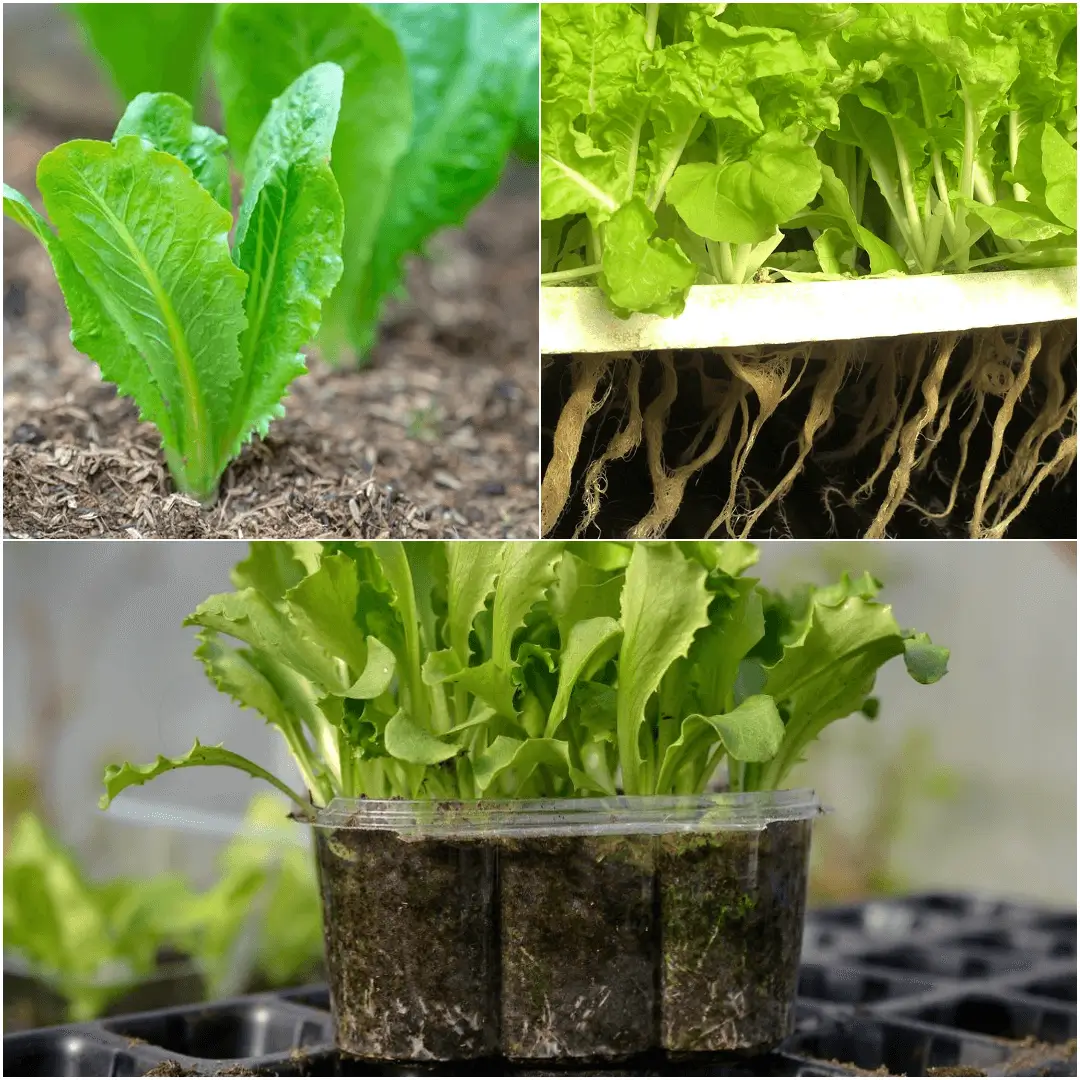Grow lettuce is one of the simplest and most rewarding gardening tasks, especially for beginners. Whether you’re looking to add a fresh, crisp bite to your salads or grow a steady supply of healthy greens, lettuce is the perfect crop to start with. But how do you ensure your lettuce grows strong and healthy? Let’s break it down, step by step.
Understanding Lettuce Varieties
Lettuce comes in various shapes and flavors, so knowing which type you want to grow is the first step.
Hearting Types (Butterhead, Romaine, Cos, Iceberg)
Hearting types form a central head and are a bit more structured in shape. Butterhead lettuce has soft, tender leaves, while romaine (or cos) offers a crunchy texture. Iceberg, perhaps the most famous of them all, gives you those firm, crisp leaves perfect for a classic salad.
Loose-leaf Varieties
Loose-leaf varieties don’t form a central head, which means you can harvest them as needed. These are great for people who love to pluck a few leaves at a time for sandwiches or salads. Think of them as the “grab-and-go” option of the lettuce world!
The Ideal Growing Conditions for Lettuce
To grow lettuce successfully, you need to set the right stage—think of it like preparing for a play. If the conditions aren’t right, the performance (or in this case, the lettuce) will fall flat.
The Best Time to Plant Lettuce
Lettuce thrives in cool weather, so the best times to plant it are in the spring and fall. Planting during the hot summer months can lead to bolting (which we’ll talk about later).
Ideal Soil Temperatures
Lettuce prefers soil temperatures between 45°F and 65°F (7°C to 18°C). Anything hotter, and you risk stressing the plants, which could lead to bitter-tasting leaves.
Importance of Sunlight and Shade
Lettuce needs about 5 to 6 hours of sunlight daily. However, in hot climates, it’s best to provide some afternoon shade to prevent wilting and stress.
Preparing the Soil for Lettuce Growth
Before planting, make sure your soil is loose, well-draining, and enriched with compost. Lettuce doesn’t like soggy soil, so aim for moisture retention without waterlogging.
How to Plant Lettuce
Planting lettuce isn’t rocket science, but there are a few tricks to getting it right.
Direct Sowing vs. Starting Indoors
You can either plant your lettuce seeds directly in the garden or start them indoors. Direct sowing is perfect if you want to skip the fuss of transplanting, but starting indoors gives you a head start, especially if you’re planting early in the season.
The Proper Depth for Planting Lettuce Seeds
Plant your seeds about 1/8 to 1/4 inch deep. Lettuce seeds are tiny, so it doesn’t take much soil to cover them. Don’t worry; they’ll push through!
Spacing Requirements for Different Lettuce Types
Spacing matters. Loose-leaf varieties need about 4 inches between plants, while romaine and butterhead require 8 inches. Crisphead lettuce needs the most space—about 16 inches apart.
Succession Planting for Continuous Harvest
To keep the lettuce coming, plant new seeds every two weeks. This is called succession planting and ensures you always have fresh greens ready to harvest.
Watering and Maintenance Tips
Once planted, lettuce requires consistent care, but don’t worry—it’s not needy!
How Much Water Does Lettuce Need?
Lettuce loves moisture but hates being drowned. Keep the soil consistently moist but avoid waterlogging. Overwatering can lead to root rot, and no one wants that.
Using Organic Mulch to Retain Moisture
A light layer of organic mulch will help maintain moisture levels and keep weeds at bay. Plus, mulch can cool the soil—a win-win for lettuce!
Fertilization and Nutrient Requirements
Fertilize about three weeks after transplanting using a slow-release, organic fertilizer. Too much fertilizer can encourage leafy growth but may sacrifice flavor.
Growing Lettuce in Containers
If you’re short on garden space, don’t worry—you can still grow lettuce in containers!
Choosing the Right Container Size
Opt for containers that are 6 to 12 inches deep. This gives the roots plenty of room to spread out and absorb nutrients.
Special Care for Container-Grown Lettuce
Container-grown lettuce dries out faster than garden-grown lettuce, so keep an eye on soil moisture. Also, apply a balanced fertilizer once the plants are 4 to 6 inches tall.
Harvesting Lettuce
Now comes the fun part—harvesting!
When and How to Harvest Different Varieties
You can harvest loose-leaf varieties by removing the outer leaves as needed. For hearting types like butterhead and romaine, you can cut the entire head at the base once it’s matured.
The Cut-and-Come-Again Harvesting Method
This method is popular for loose-leaf varieties. You simply harvest a few leaves at a time, allowing the plant to keep growing for a prolonged harvest season.
Preventing Lettuce from Bolting
Nothing is more frustrating than your lettuce bolting. So how do you prevent it?
What is Bolting and Why Does it Happen?
Bolting occurs when lettuce prematurely flowers and goes to seed, which makes the leaves bitter. It usually happens in response to warm temperatures.
Techniques to Delay Bolting
To prevent bolting, provide shade during the hottest parts of the day and water consistently. You can also try growing bolt-resistant lettuce varieties if you live in a warm climate.
Common Pests and Diseases
Lettuce has a few enemies, but don’t worry, you’ve got this.
Dealing with Aphids, Cutworms, and Slugs
Aphids, cutworms, and slugs love lettuce as much as you do. Use row covers, natural repellents, or companion plants like garlic and chives to deter these pests.
Identifying and Treating Lettuce Diseases
Keep an eye out for powdery mildew and lettuce mosaic virus. Ensure good air circulation and avoid overwatering to prevent fungal diseases.
Companion Planting and Natural Pest Control
Companion planting with chives, garlic, or marigolds can naturally deter pests and protect your crops without harmful chemicals.
A Simple and Rewarding Experience
Growing lettuce is simple, rewarding, and a fantastic way to bring fresh, healthy greens to your table. Whether you’re growing it in your garden or in containers, lettuce is a versatile crop that will keep giving as long as you provide it with the right care. Remember to plant at the right times, keep an eye on the moisture levels, and watch for pests. Soon enough, you’ll be enjoying delicious salads made with your homegrown lettuce, and there’s nothing quite like that!
FAQs:
How do you grow lettuce for beginners?
Growing lettuce for beginners is straightforward. Start by selecting the right variety based on your preference—hearting or loose-leaf. Prepare your soil by ensuring it’s loose and well-draining, and plant seeds either directly in the ground or indoors about 2-4 weeks before the last frost. Keep the soil moist, provide adequate sunlight, and consider succession planting to ensure a continuous supply of fresh lettuce.
How long does it take to grow lettuce?
Lettuce generally takes between 30 to 70 days to mature, depending on the variety. Loose-leaf types can be ready for harvest in as little as 30 days, while hearting varieties like romaine or butterhead usually take about 60-70 days. Keep in mind that continuous harvesting can extend your yield throughout the season.
Is lettuce easy to grow?
Absolutely! Lettuce is one of the easiest crops to grow, making it ideal for novice gardeners. With its quick germination and relatively low maintenance needs, you can enjoy homegrown lettuce without much hassle. Just remember to monitor the conditions and care for your plants as they grow.
Will lettuce grow back after cutting?
Yes, lettuce can grow back after cutting if you use the cut-and-come-again method. By harvesting the outer leaves instead of pulling the entire plant, you allow the inner leaves to continue growing, providing a longer harvest season. Just ensure to give your lettuce proper care between harvests.


